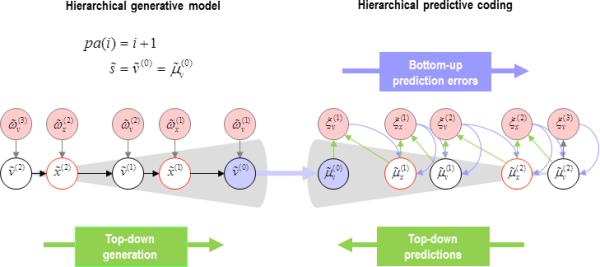Figure 4.

This figure describes the predictive coding scheme associated with a simple hierarchical model shown on the left. In this model each node has a single parent. The ensuing inversion or generalised predictive coding scheme is shown on the right. The key quantities in this scheme are (conditional) expectations of the hidden states and causes and their associated prediction errors. The basic architecture – implied by the inversion of the graphical (hierarchical) model – suggests that prediction errors (caused by unpredicted fluctuations in hidden variables) are passed up the hierarchy to update conditional expectations. These conditional expectations now provide predictions that are passed down the hierarchy to form prediction errors. We presume that the forward and backward message passing between hierarchical levels is mediated by extrinsic (feedforward and feedback) connections. Neuronal populations encoding conditional expectations and prediction errors now have to be deployed in a canonical microcircuit to understand the computational logic of intrinsic connections – within each level of the hierarchy – as shown in the next figure.
